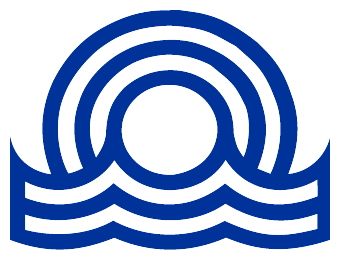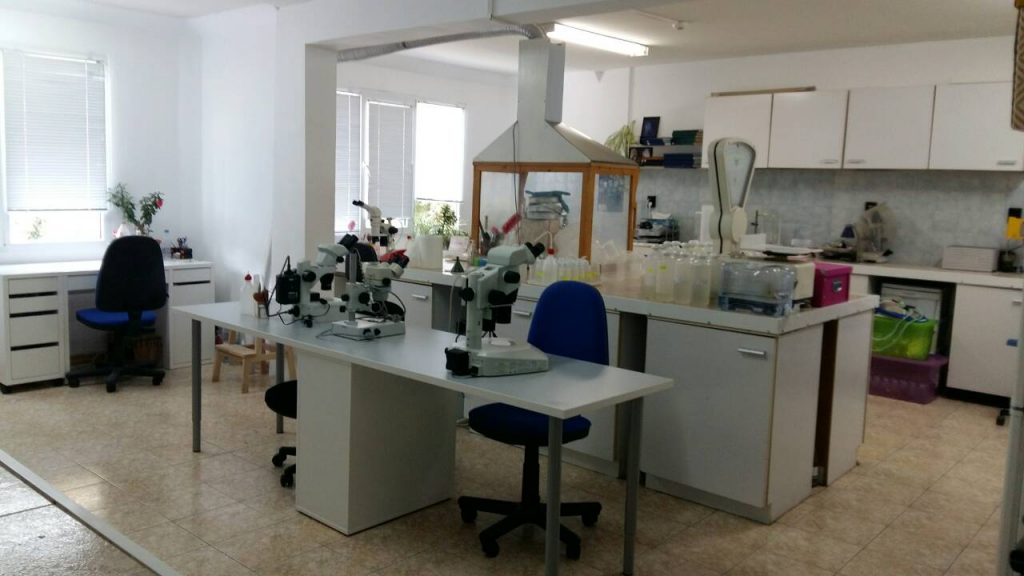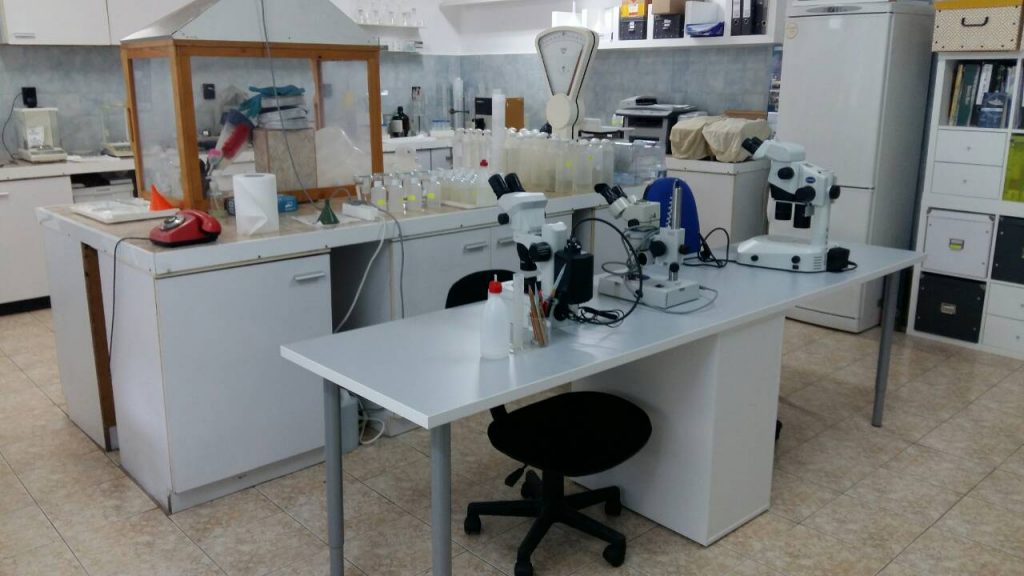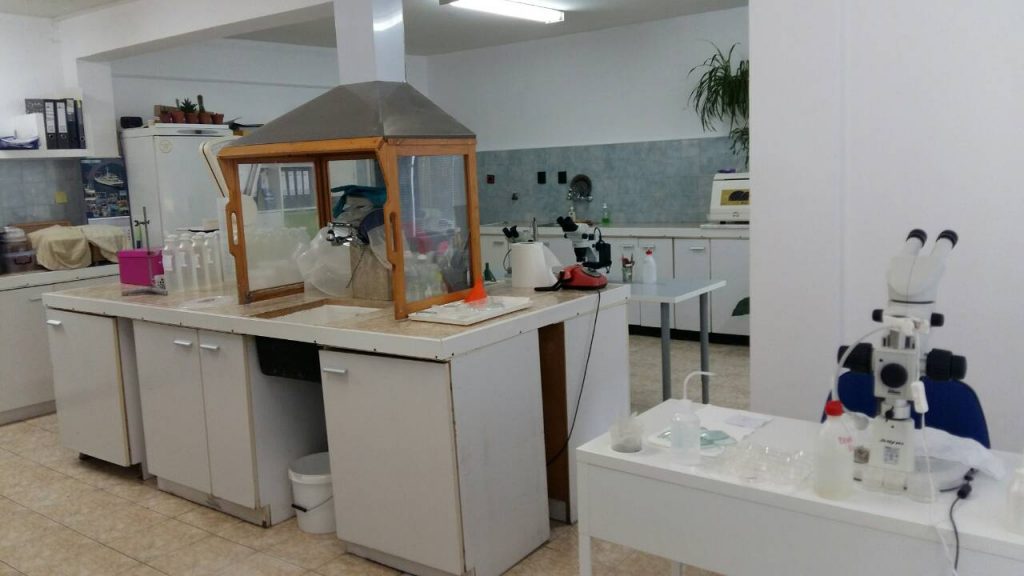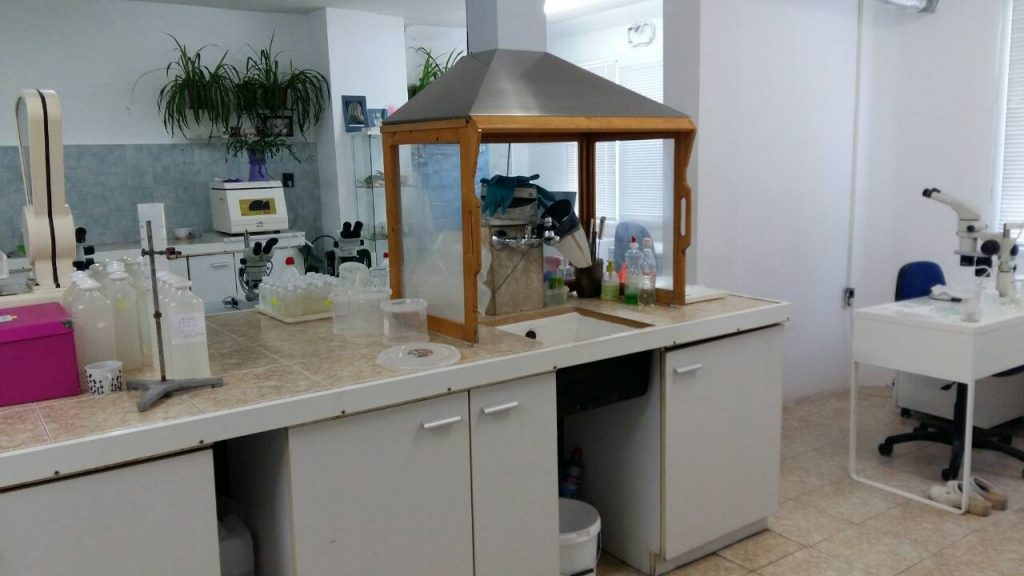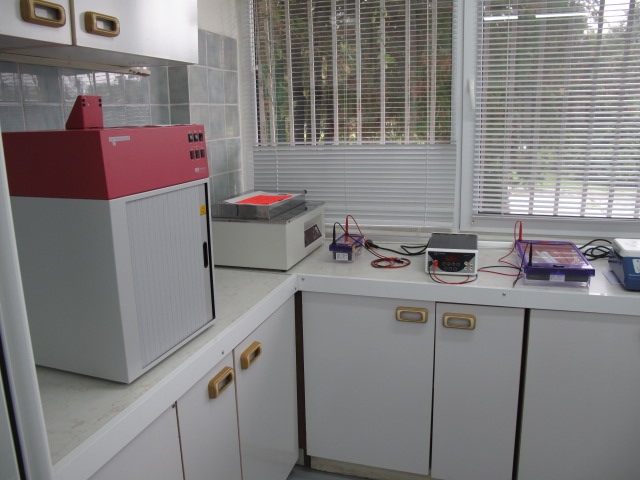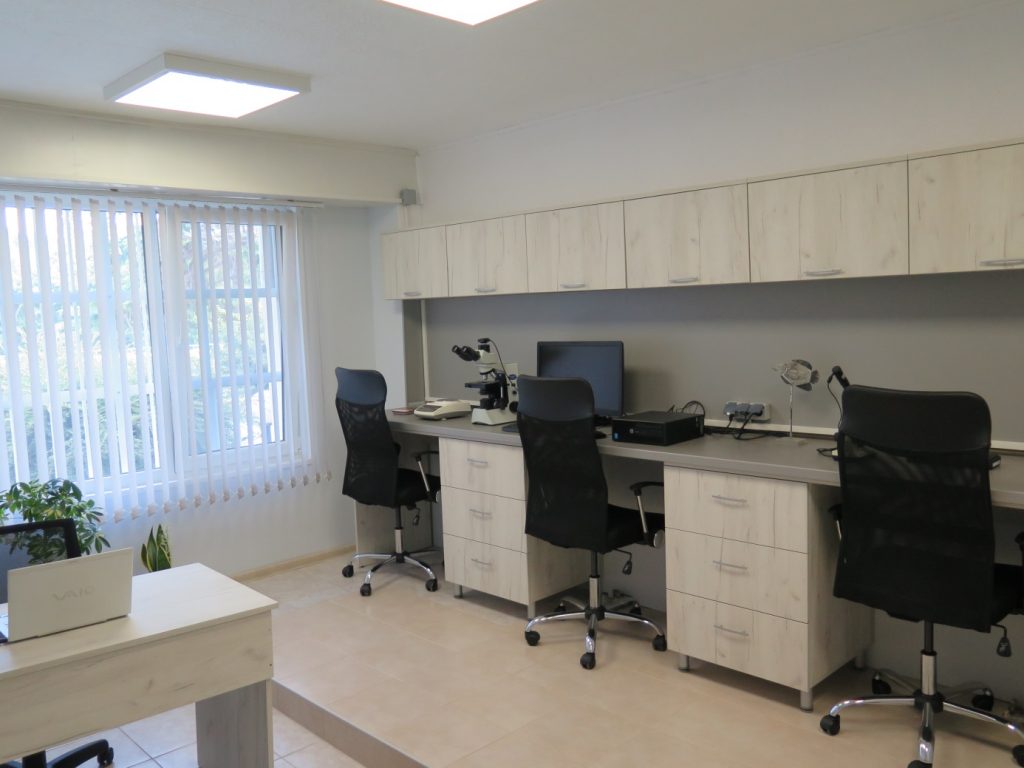Research infrastructure
Biological laboratories
Marine Biology and Ecology Department has 3 laboratories (Main Laboratory of Marine Biology and Ecology, Laboratory of Molecular Taxonomy and Ecology of Marine Organisms and Laboratory of Ichthyology), furnished with the necessary technical means, literature and equipment for conducting research related to the ecology and biology of the species and application of molecular-genetic methods to study the population-genetic structure and specify the taxonomic affiliation of marine hydrobionts.
MAIN LABORATORY OF MARINE BIOLOGY AND ECOLOGY
Phytoplankton analysis. The laboratory prepares phytoplankton samples for taxonomic analysis after primary treatment by decantation and concentration. The analyzed parameters are: species composition, taxonomic structure, abundance, phytoplankton biomass, chlorophyll a concentration. The analyzes are performed in compliance with the requirements of the European WFD (creation and validation of phytoplankton indicators for determining the quality of coastal sea water, development of classification systems), MSFD (Descriptor 1 – Biodiversity, Descriptor 2 – Non-native species, Descriptor 4 – Food webs , Descriptor 5 – Eutrophication) and climate change.
Zooplankton analysis Zooplankton samples are prepared for taxonomic analysis after primary processing by decantation and concentration. By using microscopic technique, species / taxonomic identification of zooplankton is performed and its number is determined. The metrics to be analyzed are species composition, abundance [spec. m-3] and biomass [mg. m-3] of mesozooplankton, ichthyoplankton and macrozooplankton.
The analyzes are performed in relation to: (a) implementation of the national monitoring for assessment of the ecological status of marine water, according to the WFD, where zooplankton is an additional element for the quality of coastal water bodies; b) assessment of the status of the marine environment according to Descriptor 1 (Biodiversity) pelagic habitats, Descriptor 2 (Non-native species), Descriptor 4 (Food webs), in compliance with the requirements of MSFD; (c) long-term changes in the structure of zooplankton as a result of various anthropogenic activities, including global climate change; (d) development of indicators and classification systems for biological quality elements in the implementation of the Water Framework Directive 2000/EU/60; e) development of criteria, indicators and targets for achieving good status of the marine environment within the meaning of the MSFD.
Analysis of macrophytobenthos (algae and seagrass) – determination of species composition and biomass in accordance with the application of the WFD and monitoring of the BQE macrophytobenthos.
Analysis of macrozoobenthos: species composition, abundance and biomass (wet weight) of invertebrates with a size > 1 mm inhabiting the seabed. The analyzes are carried out in connection with the implementation of the national monitoring for assessment of the ecological status of the sea water, according to the WFD; assessment of the status of the marine environment according to Descriptors 1,6 – Biodiversity of benthic habitats and integrity of the seabed, according to the requirements of MSFD; classification and mapping of bottom biotope distribution, modeling and verification of physical bottom habitats.
LABORATORY OF MOLECULAR TAXONOMY AND ECOLOGY OF MARINE ORGANISMS
Main activities of the Laboratory: Implementation of molecular-genetic methods for studying the population-genetic structure and specifying the taxonomic affiliation of marine hydrobionts, directly related to the study of their biodiversity and the rational use of their stocks.
Molecular studies include: DNA extraction, amplification of certain DNA fragments using polymerase chain reaction (PCR) and sequencing. Various DNA markers are used to identify species, populations and individuals, such as microsatellites, mitochondrial DNA, nuclear DNA, ribosomal DNA, and allozymes, as a non-PCR-based marker method. The laboratory also uses metabarcoding – molecular analysis of ecological DNA (cellular or extracellular DNA left by the body in the marine environment) to detect the presence of a species or study biodiversity.
Genetic analyzes and methods used vary depending on the issues of interest. Some of the topics that are considered using genetic approaches are: study of the population-genetic structure of industrial fish species and determination of their migration routes in the Black Sea; clarification of the taxonomic status of fish species (marine and freshwater); identification of the origin of the offspring from sturgeons used for stocking the Danube in restocking programs; identification of invasive species; analyzes of non-fish products (mussels, Rapana snails, etc.); determination of the current state and specifying the species composition of the phytoplankton in the Black Sea; elucidation of the taxonomic affiliation of morphologically indistinguishable phytoplankton species, including potentially toxic ones, presented in the Bulgarian water area of the Black Sea.
LABORATORY OF ICHTHYOLOGY
The ichthyology laboratory has the latest generation Olympus CX 31 microscope with built-in digital camera ALTRA20 and a fluorescent system with the ability to archive the results of analyzes and make comparative assessment, as well as electronic scales. It is equipped with a scanner and software for evaluation and interpretation of the results. High-quality reagents and consumables are used in compliance with all requirements for good laboratory practice, which guarantees accurate research results.
The applied methods and available equipment ensure high quality of the research.
The research is focused on marine fish species with special emphasis on sprat, anchovy, horse mackerel, whiting, mullet, shark, etc. Sample processing (separation of otoliths and scales) and determination of the age of the fish, analysis of the annual cycles as well as microscopy and histological characteristics of the gonads are performed.
Studies are conducted to determine the main biological parameters as size and age structure of populations, growth rate, fatness, sexual maturation, assessment of the degree of fertility and nutritional spectrum.
Part of the research is aimed at determining the number and biomass of the most important industrial fish species in front of the Bulgarian Black Sea coast. Models for assessment of fish stocks are applied.
